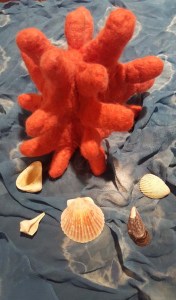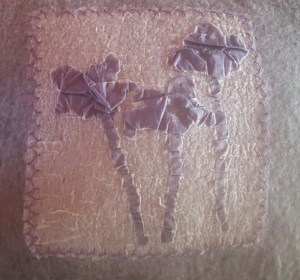Pandagirl’s Year in Review 2016
I hope everyone had a nice holiday and are ready for the New Year.
It’s almost the end of 2016 and looking back on the things I’ve done, there seems to be a few themes.
I did a lot of natural dyeing. Avocado skins, pits and the combo.
Cochineal
Madder
Cutch, Rhubarb and Indigo
Eco printing
Resists
2nd Quarter challenge working with scraps – the former credit card case turned into an ear bud case.
Then the cityscape with scraps.
A scarflette with locks
Ginkgo stitching
Crochet piece felted and embellished with stitching
Felting wit my grandsons
Silk scraps into a free motion stitched vase
3rd Quarter challenge adding dimension from Kristy Kun’s class
Ruth’s Paper Lamination class
Teri’s hat class
Mini weaving wall hanging
More work with scraps for a sewing machine case
4th Quarter Challenge with embellishments for a coupon case.
And blue booties for a shower
Of course, there were also plenty of samples during the year including using the needle felting machine to felt some unfeltable fabrics.
A big thank you to Cathy Wycliff for her post on weaving and felting; my sister Carol Olson for sharing her new sheep with us; Nada for sharing her workshop experience in Slovenia; Zara for her posts on Felting on a Trampoline and her Yak, Mongolian, Churro and Zwartables samples; Leonor for her soap tutorial and Terri Simon on sharing her projects from Kristy Kun’s class.
It was a great year for me in terms of learning new things and doing some recycling. How was your 2016 year of fibers?
Happy New Year and Happy Felting in 2017!

























































